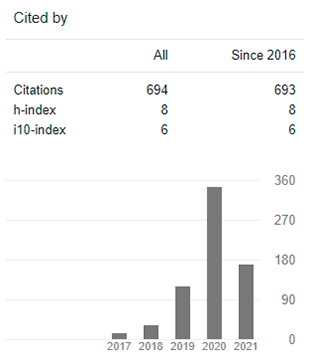Society and Education in the Process of Change: Evolving Alliances and Sustainable Projects
DOI:
https://doi.org/10.29394/Scientific.issn.2542-2987.2023.8.28.19.370-390Keywords:
cultural change, educational ecosystem, educational innovation, school climate, sustainable developmentAbstract
This essay examines the impact of organizational climate in educational settings, highlighting its importance for teacher well-being and student learning. It analyzes how factors such as globalization, technological advances, and changing social demands have transformed the educational landscape, creating new challenges for educators and institutions. The text explores key concepts such as teacher burnout syndrome, introduced by Freudenberger (1974); and developed by Maslach and Jackson (1981); job satisfaction, and the need for innovation in educational models. A Creative and Entrepreneurial Learning-Teaching Ecosystem (CELTE) model is presented as a response to these challenges, integrating various actors and resources to foster more adaptive and sustainable learning. Drawing on Toffler (1970); warnings about the effects of technological development on education and Castells (2006); observations on inequalities created by the information society, the essay underscores the importance of aligning education with the Sustainable Development Goals and the 2030 Agenda. It concludes by emphasizing the need to transform educational systems to create positive organizational climates that enhance personal, institutional, and community development.
Downloads
References
Alonso-Tapia, J., & Nieto, C. (2019). Clima emocional de clase: naturaleza, medida, efectos e implicaciones para la educación. Revista de Psicodidáctica, 24(2), 79-87, e-ISSN: 1136-1034. Recuperado de: https://doi.org/10.1016/j.psicod.2018.08.002
Arreguit, X., & Hugues, J. (2019). Competencias y educación para los trabajos y desafíos del mañana: la perspectiva de una empresa. Aula abierta, 48(4), 373-392, e-ISSN: 0210-2773. España: Ediciones de la Universidad de Oviedo.
Baeza, S. (2005). Funcionamiento y clima sociorrelacional del aula. Una perspectiva sistémica: Una escala sistémica de observación de clases (ESOC). ISBN: 9879989031. Buenos Aires, Argentina: Editorial Aprendizaje Hoy.
Burbano-Ronquillo, M., Alulema-Pérez, N., Villacrés-Jínez, P., & Gody-Arce, W. (2020). Liderazgo, management y su impacto en el clima organizacional. Polo del Conocimiento: Revista científico - profesional, 5(2), 153-178, e-ISSN: 2550-682X. Ecuador: Imprenta y Casa Editora “Coni”.
Bustamante, M., & Álvarez, A. (2019). Validación de un cuestionario de clima organizacional para organizaciones de salud. Revista Gerencia y Políticas de Salud, 18(36), 1-29, e-ISSN: 2500-6177. Recuperado de: https://doi.org/10.11144/Javeriana.rgsp18-36.vcco
Castells, M. (2006). La era de la información. Volumen 3, ISBN: 9788420677200. Madrid, España: Alianza Editorial.
Collell, J. & Escudé, C. (2006). Maltrato entre alumnos (I). Presentación de un cuestionario para evaluar les relaciones entre iguales. CESC Conducta y experiencies sociales a clase. Ámbits de Psicopedagogia, 18, 8-12. Cataluña, España: Generalitat de Catalunya.
Freiberg, H. (2005). Climate: Measuring, Improving and Sustaining Healthy Learning Environments. ISBN: 1135714517. United States: Routledge.
Freudenberger, H. (1974). Staff Burn-Out. Journal of Social Issues, 30(1), 159-165, e-ISSN: 0022-4537. Recovered from: https://doi.org/10.1111/j.1540-4560.1974.tb00706.x
Gálvez-Nieto, J., Salvo, S., Pérez-Luco, R., Hederich, C., & Trizano-Hermosilla, Í. (2017). Invarianza factorial del Cuestionario para Evaluar Clima Social del Centro Escolar en estudiantes chilenos y colombianos. Revista Latinoamericana de Psicología, 49(2), 119-127, e-ISSN: 0120-0534. Recuperado de: https://doi.org/10.1016/j.rlp.2016.09.003
Gold, Y. (1984). The Factorial Validity of the Maslach Burnout Inventory in a Sample of California Elementary and Junior High School Classroom Teachers. Educational and Psychological Measurement, 44(4), 1009-1016, e-ISSN: 0013-1644. United States: SAGE Publications.
Greenglass, E., & Burke, R. (1988). Work and family precursors of burnout in teachers: Sex differences. Sex Roles, 18, 215-229, e-ISSN: 1573-2762. Recovered from: https://doi.org/10.1007/BF00287791
Haynes, N., Emmons, C., & Ben-Avie, M. (1997). School Climate as a Factor in Student Adjustment and Achievement. Journal of Educational and Psychological Consultation, 8(3), 321-329, e-ISSN: 1047-4412. Recovered from: https://doi.org/10.1207/s1532768xjepc0803_4
Kelley, E. (1989). Improving school climate. The Practitioner, 15(4), 1-5. United States: National Association of Secondary School Principals.
Maslach, C., & Jackson, S. (1981). Maslach Burnout Inventory. United States: Consulting Psychologist Press.
Mejías, A., Reyes, O., & Arzola, M. (2006). Medición del clima organizacional en instituciones de educación superior. Universidad, Ciencia y Tecnología, 30(38), 55-61, e-ISSN: 1316-4821. Venezuela: AutanaBooks, S.A.S.
Murray, H., & Macadams, D. (1938). Explorations in Personality. United States: University Press.
Payne, B., & Manning, B. (1990). The effect of cognitive self-instructions on preservice teacher's anxiety about teaching. Contemporary Educational Psychology, 15(3), 261-267, e-ISSN: 0361-476X. Recovered from: https://doi.org/10.1016/0361-476X(90)90023-T
Pedraza , N., (2020). El clima y la satisfacción laboral del capital humano: factores diferenciados en organizaciones públicas y privadas. Innovar. Revista de ciencias administrativas y sociales, 30(76), 9-24, e-ISSN: 2248-6968. Recuperado de: https://doi.org/10.15446/innovar.v30n76.85191
Pérez, A., Ramos, G., & López, E. (2009). Diseño y análisis de una escala para la valoración de la variable clima social aula en alumnos de Educación Primaria y Secundaria. Revista de Educación, 350, 221-252, e-ISSN: 0034-8082. España: Ministerio de Educación, Cultura y Deporte.
Phillips, B., Lee, M. (1980). The changing role of the American teacher: Current and future sources of stress. Cooper En C.L., Marshall J. (Eds.). White collar and professional stress. (pp. 93-111). Nueva York, United States: Wiley.
Ricken, R. (1980). Teacher burnout: A failure of the supervisory process. NASSP Bulletin, 64(434), 21-24, e-ISSN: 1930-1405. United States: Asociación Nacional de Directores de Escuelas Secundarias (NASSP).
Rodríguez, D. (2005). Diagnóstico Organizacional. Séptima edición. Chile: Ediciones UC.
Rodríguez-Mantilla, J., & Fernández-Díaz, M. (2015a,b). Diseño y validación de un instrumento de medida del clima en centros de educación secundaria. Educación XX1: Revista de la Facultad de Educación, 18(1), 71-98, e-ISSN: 2174-5374. España: UNED - Universidad Nacional de Educación a Distancia.
Sulak, T. (2018). School climate: The controllable and the uncontrollable. Educational Studies, 44(3), 279-294, ISSN: 0305-5698. Recovered from: https://doi.org/10.1080/03055698.2017.1373630
Tavares, F., Filgueira, C., Lima, N., Oliveira, P., Santos, M., & Pereira, V. (2021). Clima organizativo en una unidad de cuidados intensivos: percepción del equipo de enfermería. Enfermería Global, 20(2), 390-401, e-ISSN: 1695-6141. Recuperado de: https://doi.org/10.6018/eglobal.427861
Toffler, A. (1970). Future Shock. New York, United States: Random House.
Trianes, M., Infante, L., Blanca, M., Morena, M., & Raya, S. (2006). Un cuestionario para evaluar el clima social del centro escolar. Psicothema, 18(2). 272-277, e-ISSN: 1886-144X. España: Colegio Oficial de Psicólogos del Principado de Asturias; Ediciones de la Universidad de Oviedo.
Downloads
Published
How to Cite
Issue
Section
License
Copyright (c) 2023 INDTEC, C.A.

This work is licensed under a Creative Commons Attribution-NonCommercial-ShareAlike 4.0 International License.
The content of the journals of this site, are under a Creative Commons Attribution-Noncommercial-Share Alike 4.0 International License.













